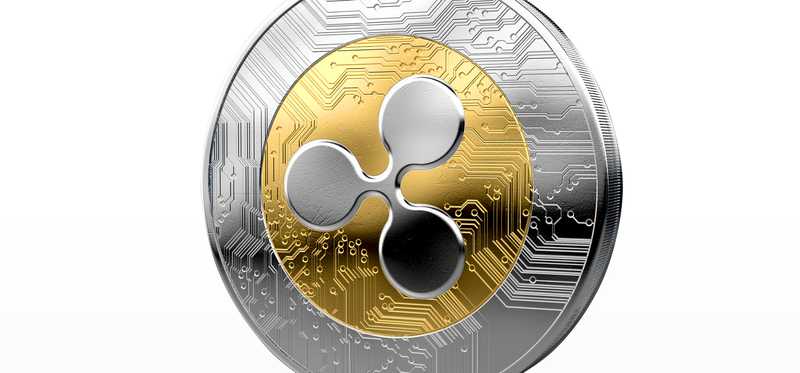Forget Ethereum: Here Are 8 Intriguing Cryptocurrencies You Should Follow

Forget Ethereum: Here Are 8 Intriguing Cryptocurrencies You Should Follow
Look beyond bitcoin and Ethereum
In 2017, virtual currencies simply couldn’t be stopped. When the year began, the combined market cap of every cryptocurrency was just shy of $18 billion. But by year’s end, cryptocurrencies were worth a combined $613 billion. That’s a gain of more than 3,300% for you math-phobic folks. For a single asset class, it might just be the best year ever recorded.
This meteoric rise is often attributed to the excitement surrounding blockchain technology. Blockchain is the digital, decentralized ledger that underlies cryptocurrencies and logs all transactions without the need for a financial intermediary, such as a bank.
Bitcoin may have been the first to put the spotlight on blockchain, but Ethereum, the second-largest cryptocurrency by market cap, has really driven blockchain evolution. Through the Enterprise Ethereum Alliance, 200 organizations from around the world are testing versions of Ethereum’s blockchain in demos and small-scale projects across a variety of sectors.
Yet Ethereum is now valued at about $100 billion altogether. In other words, it’s far from being a hidden gem. At this point, it may be worth forgetting about Ethereum and turning your attention to cryptocurrencies that could have more upside potential.
Here are eight such cryptocurrencies for you to follow.
Previous
Next

1. Ripple
Among the largest cryptocurrencies (those with a market cap of $10 billion or higher), Ripple deserves consideration by virtual currency enthusiasts due to the incredible speed of its network and its growing number of partnerships.
According to a transaction speed analysis by HowMuch.net, Ripple’s blockchain is capable of processing up to 1,500 transactions per second. That’s not even 10% of what Visa (NYSE: V) can handle, but it’s more than 200 times bitcoin's capacity and nearly 75 times quicker than Ethereum. Granted, speed isn’t everything -- block processing times matter, too -- it sets Ripple up to be an appealing blockchain option for the financial service companies that it has catered to.
In November, Ripple teamed up with American Express (NYSE: AXP) and Banco Santander (NYSE: SAN) to test non-card, cross-border payments sent over American Express’s FX International Payments network and processed through Ripple’s blockchain. These payments, sent to U.K. Santander accounts, are expected to settle instantly, rather than taking days to complete.
Further, in January, Ripple and MoneyGram International (Nasdaq: MGI) announced a deal that will allow MoneyGram to use Ripple’s coin, XRP, to expedite money transfer settlement times and perhaps lower transfer fees. Though Ripple has a big valuation (about $33 billion as of this writing), these partnerships suggest its blockchain is appealing to big financial service companies.
Previous
Next

2. Qtum
The intrigue of Qtum is that it combines bitcoin’s core infrastructure with Ethereum’s Virtual Machine (i.e., the best attributes of the two most popular cryptocurrencies) to create a highly customizable blockchain that it believes businesses will want to use. Last month, Qtum wound up landing two brand-name Chinese partners, and the Qtum Foundation expects to announce five major partnerships this year.
The first partner is 360 Finance, a subsidiary of the privately held Qihoo 360. If the name rings a bell, it’s because Qihoo 360 is the company behind 360 Search, the search engine with the third-highest market share in China. Under the agreement, the 360 Blockchain Research Center, BTN Foundation, and Qtum Foundation will form a sort of blockchain laboratory to develop next-generation solutions.
Just one day after partnering with 360 Finance, the Qtum Foundation announced a strategic collaboration with Baofeng Bokocloud. Baofeng offers one of the most popular streaming and video services in China, with more than 200 million active users. What’s really notable about this deal is Baofeng’s pledge to help Qtum run over 50,000 nodes on its Bokocloud service. These nodes will give Qtum the ability to scale its network, possibly well beyond that of Ethereum.
ALSO READ: 5 Cryptocurrencies That Have Brand-Name Partners
Previous
Next

3. Stellar
Similar to Qtum, Stellar focuses on attracting multinational businesses with the use of "smart contracts." Smart contracts are protocols that aid in the verification, facilitation, or enforcement of a contract. The fact that these contracts are transparent and legally binding is why Ethereum’s blockchain has been so popular, and it's exactly why development teams like Stellar have incorporated smart contracts into their blockchains.
Stellar’s biggest win to date was the October announcement of a partnership with IBM (NYSE: IBM) and currency exchange platform KlickEx. IBM generates tens of billions of dollars in revenue from outside the U.S., and partnering with Stellar should allow payments from select overseas countries to settle faster.
Stellar deployed its blockchain technology into a dozen large banks in the South Pacific, with the expectation that its average transaction will settle in a mere two to five seconds. That would be a huge improvement over the current settlement window of several days, potentially improving IBM’s cash flow and its relationship with customers in the process.
Previous
Next

4. NEO
Like Qtum and Stellar, NEO employs smart contracts in its blockchain. Founded by Da Hongfei in China, NEO is attempting to incorporate the positive attributes of Ethereum’s blockchain, but have its own blockchain perform better than the Ethereum network in terms of determinism, scalability, and compatibility. In particular, smart contract developers won’t have to learn complex new computer code languages when using NEO, which may give it a leg up over Ethereum and its peers.
Yet, one of the interesting aspects of NEO is that it’s not actually a decentralized network – at least not yet. Decentralization, or the idea that no single entity can control a cryptocurrency, is a core principle of most blockchains. However, NEO’s development team controls a large portion of its outstanding coins, and its cryptocurrency isn’t minable. This centralization might be worrisome to certain investors, but it also leads to quick decision-making from the development team since consensus involves so few people. This is a big reason why NEO has been able to tout up a processing speed of up to 1,000 transactions per second. While not as fast as Ripple, that’s considerably quicker than Ethereum.
Previous
Next

5. Nano
If Nano has a “wow” factor, it’s the exceptionally fast processing capabilities of this block-lattice architecture blockchain. Nano can supposedly process up to 7,000 transactions per second, with hardware upgrades giving it the potential to scale this figure even higher. By comparison, Ethereum maxes out at around 20 transaction per second.
The aforementioned block-lattice is what makes Nano tick. You see, this design allows each account to have its very own blockchain, meaning a large community consensus isn’t needed every time there are updates. With users in control of their own accounts and blockchains, transactions happen at a lightning-fast pace.
But there’s a quirk worth mentioning, too. Every peer-to-peer payment on the Nano blockchain takes two transactions to complete. Even though these are fee-free and quick transactions, they still require the sender to deduct the funds from their account and the receiver to add funds to their account in separate transactions. It’s cumbersome, but Nano's incredible speed and scalability shouldn’t be overlooked.
ALSO READ: Yet Another Blockchain ETF Launches (and It's Bad!)
Previous
Next

6. IOTA
If you’re looking for something out of the ordinary among cryptocurrencies, then IOTA is another virtual currency to watch. Late last year, IOTA introduced the world to its Data Marketplace. This is a blockchain-based service designed to allow businesses to share and sell their unused data. The IOTA Foundation believes that most corporate data goes unused, and its blockchain would serve as the intermediary to allow for improved sharing of this data.
IOTA’s blockchain is actually described as “blockless”; in other words, it’s open-source and completely free for users on the network. Removing transaction fees overcomes a major objection to blockchain and the current payment system.
Of course, IOTA still has a long way to go when it comes to scaling its blockchain. Though its Data Marketplace is still being tested, and the company has close to 40 brand-name participants offering feedback, transaction processing times have left a lot to be desired in the early going. Nonetheless, it’s an intriguing concept that’s worth keeping an eye on.
Previous
Next

7. Monero
One of the more exciting movements in recent months has been the rise of privacy coins like Monero. A privacy coin aims to take the perceived anonymity of a cryptocurrency transaction and cranks it up to a whole new level.
Perhaps one of the biggest misconceptions of cryptocurrencies is that transactions are completely anonymous. Because those who send or receive funds don't have to add their name or Social Security number to a transaction, there’s supposedly no way of tracing them. This, however, is mostly untrue. A blockchain analysis can often reveal the identity of the sender or receiver of virtual funds. With the use of Monero’s XMR coin, however, that’s not possible; the sender and receiver are both obfuscated.
Monero’s success is based on its use of "ring signatures" and "stealth addresses." Think of ring signatures as being similar to joint bank accounts with multiple signers, except no one knows the identity of the actual signer, and sender, of the funds. A one-time spend key known as a stealth address is created that allows the sender, and only the sender, to detect and spend those funds.
Keep in mind, however, that while privacy coins are all the rage, they’re also a target by select countries, such as South Korea, which are aiming for increased cryptocurrency trading transparency.
Previous
Next

8. NEM
There aren’t too many blockchains that have the potential to rival Nano or Ripple on speed, but NEM is capable of about 4,000 transactions per second, putting it in elite company. NEM relies on the highly customizable nature of its smart asset blockchain to make its technology work for a wide array of businesses and industries.
In particular, NEM is a perfect example of a blockchain that could succeed at non-currency applications (even though it would work just fine with the financial services industry). For example, NEM wants to use its blockchain to help retailers turn their out-of-date and error-prone loyalty rewards programs into NEM-backed loyalty rewards that can be used in stores. This would reduce instances of fraud and potentially increase foot traffic for ailing brick-and-mortar retailers.
NEM also has applications in the tech sector as an authentication and notary service. It could, in theory, use its blockchain to authorize "internet of things"-powered devices to make decisions or order parts for repairing themselves with the consent of the user.
NEM has one notable partnership, with the Malaysia Digital Economy Corporation. This government-owned institution manages the country’s digital infrastructure, oversees technology-related laws, and promotes tech-based expansion. It’s possible this partnership could be NEM’s ticket to broader use.
Ethereum may have been the basis of the blockchain's evolution, but these eight cryptocurrencies are charting unique paths forward. Make sure you’re paying attention!
ALSO READ: 3 Internet of Things Stocks to Watch in 2018
Sean Williams has no position in any of the stocks mentioned. The Motley Fool recommends American Express. The Motley Fool has a disclosure policy.
Previous
Next
Invest Smarter with The Motley Fool
Join Over Half a Million Premium Members Receiving…
- New Stock Picks Each Month
- Detailed Analysis of Companies
- Model Portfolios
- Live Streaming During Market Hours
- And Much More
READ MORE
HOW THE MOTLEY FOOL CAN HELP YOU
-
Premium Investing Guidance
Market beating stocks from our award-winning service
-
The Daily Upside Newsletter
Investment news and high-quality insights delivered straight to your inbox
-
Get Started Investing
You can do it. Successful investing in just a few steps
-
Win at Retirement
Secrets and strategies for the post-work life you want.
-
Find a Broker
Find the right brokerage account for you.
-
Listen to our Podcasts
Hear our experts take on stocks, the market, and how to invest.
Premium Investing Services
Invest better with The Motley Fool. Get stock recommendations, portfolio guidance, and more from The Motley Fool's premium services.